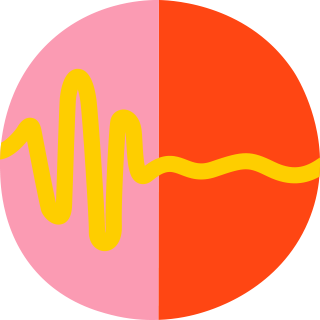
BlackRock Dynamic High Income Fund
-
IMPORTANT:
i. The BlackRock Dynamic High Income Fund follows a flexible asset allocation policy that seeks to provide a high level of income. In order to generate high levels of income the Fund will seek diversified income sources across a variety of asset classes
i. The BlackRock Dynamic High Income Fund follows a flexible asset allocation policy that seeks to provide a high level of income. In order to generate high levels of income the Fund will seek diversified income sources across a variety of asset classes, investing significantly in income producing assets such as fixed income transferable securities, including corporate and government issues which may be fixed and floating and may be investment grade, sub-investment grade or unrated, covered call options and preference shares. The Fund will use a variety of investment strategies and may invest globally in the full spectrum of permitted investments including equities, equity-related securities, fixed income transferable securities, units of undertakings for collective investment, cash, deposits and money market instruments. Currency exposure is flexibly managed.
ii. The Fund follows a dynamic asset allocation strategy and may incur greater transaction costs when rebalanced periodically. The Fund may invest in debt securities that are subject to actual or perceived ratings downgrade. An increase in interest rates may adversely affect the value of the bonds held by the Fund. The Fund may invest in non-investment grade and unrated bonds that may be subject to higher default, volatility and liquidity risks. The Fund invests in bonds issued or guaranteed by governments or authorities, which may involve political, economic, default or other risks. The Fund's investments in equities could incur significant losses due to higher fluctuation of equity values. The Fund invests in asset/ mortgage backed securities that may be subject to greater credit, liquidity, and interest rate risks and are often exposed to extension and prepayment risks. The Fund's income-generating investment strategy may reduce the potential for capital growth and future income of the Fund.
iii. The Fund is subject to risks associated with preference shares , currency risk, emerging market risk, securities lending counterparty risk, currency conversion risk including Renminbi denominated Classes, foreign investments restrictions risk and contingent convertible bonds risk.
iv. Class 5(G) Shares pay dividends gross of expenses. Class 6 Shares and Class 11 Shares pay dividends gross of expenses and/or from capital at the Directors’ discretion. Class 8 Shares pay dividends gross of expenses and/or from capital at the Directors’ discretion and include interest rate differentials arising from share class currency hedging. Negative interest rate differentials may decrease the dividends paid. Paying dividends gross of expenses may result in more income being available for distribution; however these shares may effectively pay dividends from capital – may amount to a partial return or withdrawal of an investor’s original investment or capital gains. All declared dividends result in an immediate reduction in the NAV price of the share class on the ex-dividend date.
v. The Fund may use derivatives for hedging and for investment purposes. However, usage for investment purposes will not be extensive. The Fund may suffer losses from its derivatives usage.
vi. The value of the Fund can be volatile and can go down substantially within a short period of time. It is possible that a certain amount of your investment could be lost.
vii. Investors should not make investment decisions based on this document alone. Investors should refer to the Prospectus and Key Facts Statement for details including risk factors.
BlackRock Dynamic High Income Fund
The fund is uniquely positioned to help investors “think differently about income”.
Why invest in the Fund?
1. Taps into a full range of markets to generate high income
The Fund invests dynamically across an incredibly wide opportunity set including both traditional and complementary asset classes, allowing it to go where opportunities might be. Today, that means the Fund can focus its attention on the higher yielding areas of markets.
Recent dividend: 7.4% p.a. (A6 USD share class as of 31 March 2025)
(A6 share class aims to pay a dividend on a monthly basis. Dividend Payment is not guaranteed. The Fund may effectively pay dividend from capital. See important information iv)1
Latest 6 months dividend table – A6 USD share class1
| Month | Annualized yield |
|---|---|
| 3/31/2025 | 7.42% |
| 2/28/2025 | 7.14% |
| 1/31/2025 | 7.00% |
| 12/31/2024 | 7.14% |
| 11/29/2024 | 6.93% |
| 10/31/2024 | 7.07% |
2. The other side of volatility is higher income potential
The Fund takes advantage of heightened market volatility to earn higher income through a covered call strategy.
Market volatility has also led to much higher yields and capital appreciation potential in many other income asset classes. The Fund’s active approach can tap into these opportunities to generate higher income and upside.
3. Adapt to thrive in the new market regime
The Fund invests flexibly in over 10 income asset classes globally and over 1,000 individual stocks and bonds.2 This diversification and flexibility can help investors prepare for the inevitable ups and downs in markets, and capture new opportunities as they emerge.
In addition to top-down tactical asset allocation, the Fund taps into the expertise of over 10 flagship investment teams across BlackRock for individual security selection in equities and bonds, aiming to identify the names best positioned for tomorrow’s market environment.
Explore complementary income asset classes
Complementary income asset classes have the potential to deliver higher yields, as well as capital appreciation, and their low correlation3 to more traditional asset classes can provide meaningful diversification to your portfolio.
By clicking on the link provided above, you will enter an independent third-party website which is not owned or endorsed by BlackRock. Any link you make to or from a third-party website will be at your own risk. Any use of the third-party website will be subject to and governed by the terms and conditions of the third-party website before accessing. BlackRock is not responsible or liable for the content or your use of such information on any third-party website. BlackRock does not undertake any liability, responsibility or warrant for the accuracy, legality, or content of a third-party website or for that of subsequent links. In addition, BlackRock disclaims liability for any loss, damage and any other consequence resulting directly or indirectly from or relating to your access to a third-party website.














